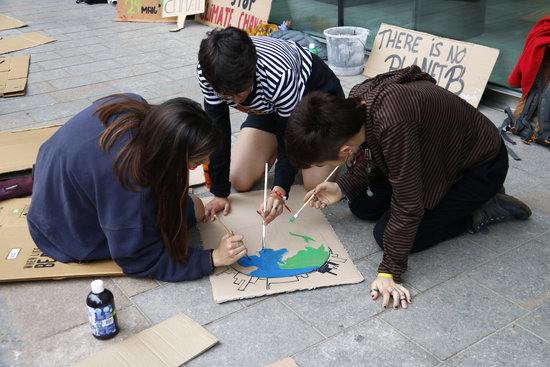Climate emergency in Catalonia: rising sea levels, droughts, and heatwaves
Pyrenees and Ebre delta are areas most vulnerable to changing weather in what is one of coming decades' biggest challenges

A study published by the Union for the Mediterranean last summer found that the Mediterranean sea is warming at a rate 20% faster than the world average.
This astonishing fact has grave implications for future droughts and heatwaves as well as on sea levels and the region's biodiversity, but aside from the coastal region as a whole, there are two main areas that are especially vulnerable to the effects of the climate emergency that will prove to be one of the biggest challenges in the coming decade and beyond.
Ebre delta and Pyrenees particularly vulnerable
"On the one hand, there is the delta of the Iberian peninsula's main river, the Ebre," explains Javier Martín Vide, a University of Barcelona physical geography professor specializing in climate change.
"Sea storms and rising sea levels will submerge it, leading to the loss of important agricultural land. On the other hand, the highest mountains will also be affected because higher temperatures will make it so some plant and animal species are unable to find their ideal conditions."
Water shortages in central Catalonia
And while the southern delta region could end up flooded due to rising sea levels, there may also be significant water shortages in the future, especially in central Catalonia: "Everything would appear to indicate that by mid-century we will have 15-20% less useful water for humans and irrigation of crops," Martín Vide adds.
Rising temperatures
Did you find last summer to be unbearably hot, even at night? Summer nights with temperatures above 20ºC have become the norm in Barcelona, and there are increasingly more over 25ºC too.
But temperatures have been rising overall, not just during the summer months. A recent study estimated that by 2050, London would have the same climate as Barcelona does now and that Barcelona would be more akin cities further south like Alicante or Murcia.
Tackling the crisis
The latest UN climate summit in Madrid was widely considered to be a failure having achieved few concrete goals, and the first Catalan summit this January only came up with a list of 17 non-binding proposals that organizations can voluntarily adhere to. Meanwhile, the effects of the climate emergency will become increasingly more serious.
"Climate change is already affecting some parts of the world and in Catalonia, it will probably begin affecting it more frequently in the next few decades with more severe weather phenomena," says Marín Vide, confirming these dire predictions.
And although most of us are not be climatologists or geophysicists, we still know enough to know that something drastic must be done. The climate emergency is a global challenge that must be tackled through global agreements and binding measures, not feeble half-promises, and unless society as a whole changes course it looks like we'll be in for a rough ride.